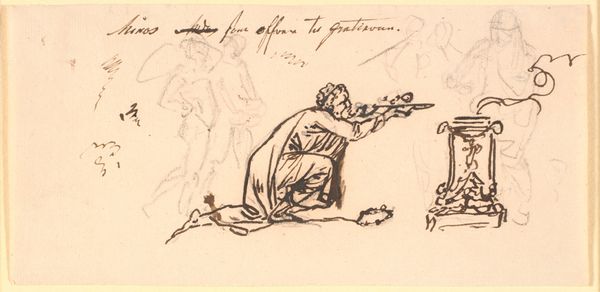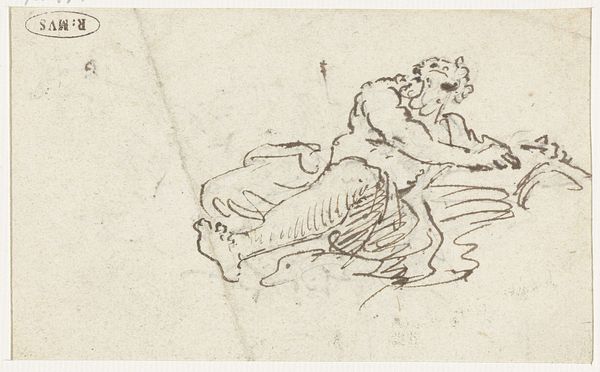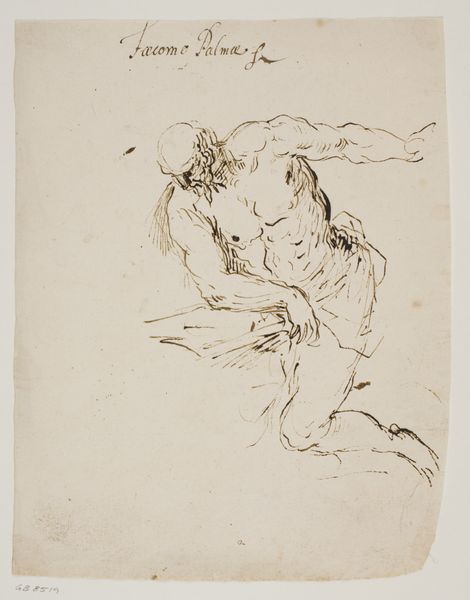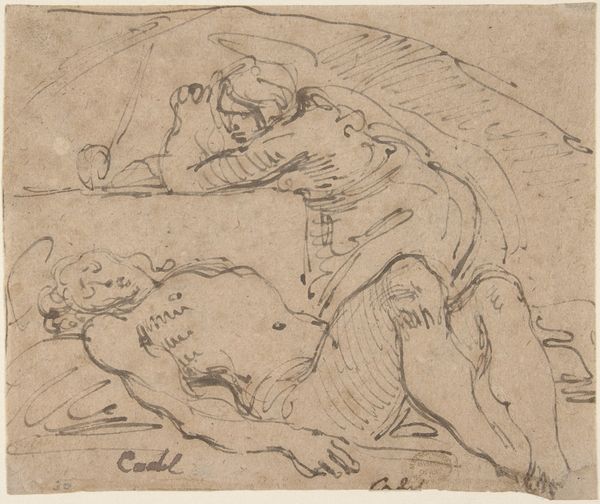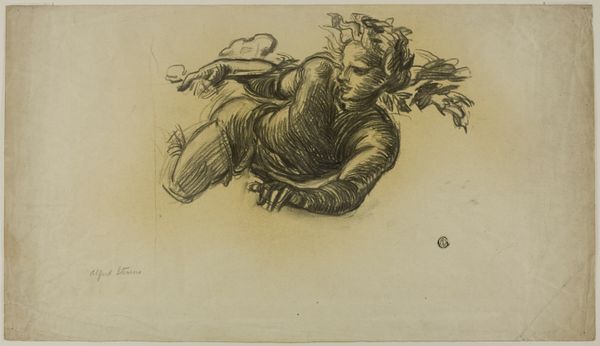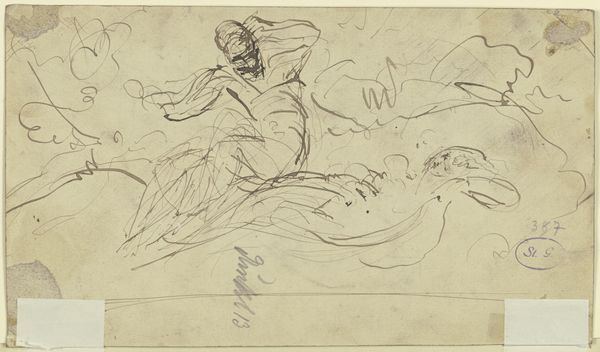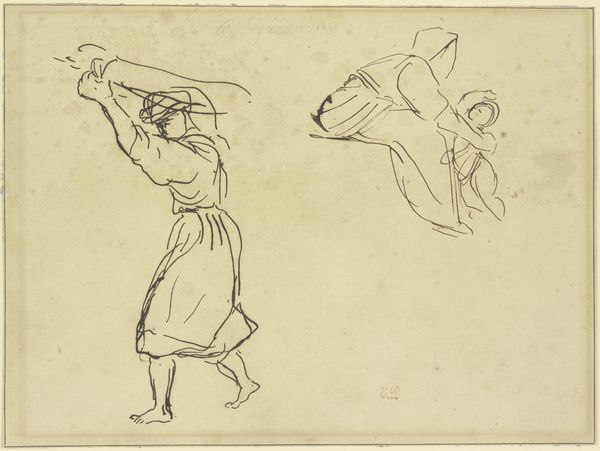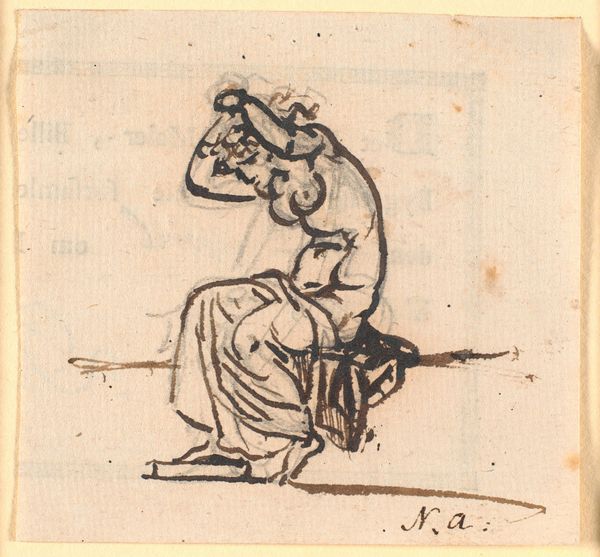
Antik figur. En knælende mand (Lycurgos?) holder en offergave frem på et fad 1743 - 1809
0:00
0:00
drawing
#
portrait
#
drawing
#
figuration
#
ancient-mediterranean
#
history-painting
#
academic-art
Dimensions: 193 mm (height) x 246 mm (width) (bladmaal)
Editor: This drawing, “Antik figur. En knælende mand (Lycurgos?) holder en offergave frem på et fad,” by Nicolai Abildgaard, likely made between 1743 and 1809, depicts a kneeling man offering something on a platter. It strikes me as very classical in its line work, almost like a preliminary sketch for something larger. What do you see in this piece? Curator: It’s intriguing how Abildgaard revives classical imagery, isn’t it? The figure's pose, the offering—they echo ancient rituals, moments imbued with symbolic weight. This "Lycurgus," if that is indeed who the artist intended, becomes a vessel for exploring those traditions. Notice the almost performative nature of the offering. What does it tell you about the relationship between the individual and the divine in the artist's view? Editor: Well, it feels very formal, very prescribed. Like there’s a specific way it needs to be done. Is that why he included those inscriptions, almost like notes? Curator: Exactly! Those inscriptions are keys, alluding to textual sources that give meaning to the image. Abildgaard invites us to decipher not just the visual but also the intellectual landscape surrounding these ancient rites. It highlights how symbols survive and are reinterpreted. Consider how he frames Lycurgus: is it reverence, duty, or something else entirely motivating this offering? Editor: I see, so he is using classical imagery to think about something else? Curator: Yes! By drawing upon these established symbols, Abildgaard taps into a cultural memory, a shared understanding. But it's not just replication; he’s adding his own layer, filtered through 18th-century sensibilities. How does that knowledge shift your understanding of the drawing's overall effect? Editor: It makes me think about how artists throughout time connect with history, using it to comment on their own present. Curator: Precisely. And the image, the offering, they become active participants in that dialogue. It is all part of the human condition across eras.
Comments
No comments
Be the first to comment and join the conversation on the ultimate creative platform.


